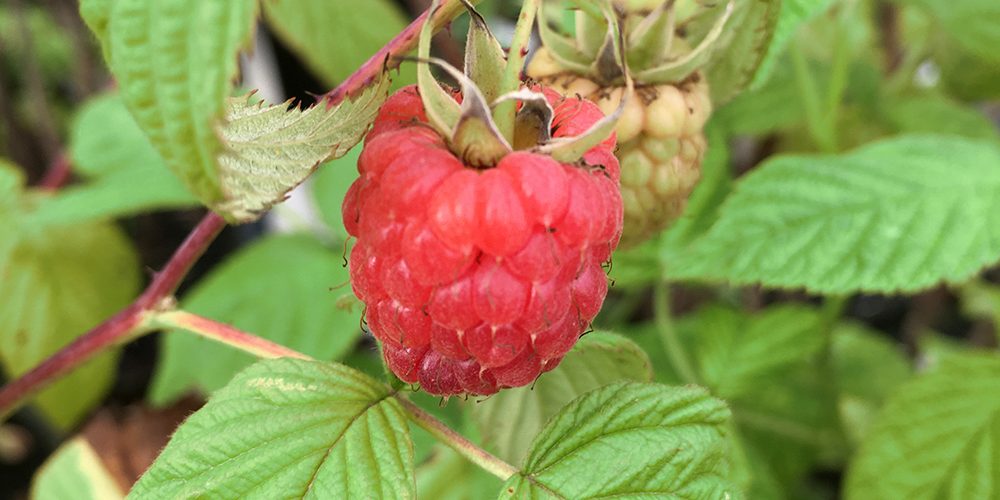We’re coming up to the planting season for bare-rooted fruit, which happens while the plants are dormant over the winter. It’s a good time to plant up raspberry canes to start a raspberry patch. This article will hopefully help you to get started, particularly if you’re new to growing fruit.
Which variety should I choose?
Raspberries are either summer fruiting, or autumn fruiting. For the simplest growing, if you’re a novice grower, we would recommend choosing an autumn fruiting variety. These need little attention and are self-supporting, so you do not need to worry about tying branches in to support systems. At the end of the season as well, they are easier for pruning as you simply cut the entire plant down to ground level after they have fruited.
Autumn Fruiting Varieties:
Can I grow raspberries in pots?
Yes! In fact, this is what we would recommend if you’re just starting out with growing raspberries. Use a combination of John Innes No 3 Compost and multipurpose compost (in a ratio of 50:50) and plant one cane to a 40cm wide pot. Add a handful or two of wormcast fertiliser for good measure as this will slowly release nutrients. Make sure the pot is nice and deep, 30cm min, and place the pot in a sheltered, sunny site. You can, of course, move the pot from summer to winter, ensuring that it gets the best light and the most sheltered conditions depending on the weather.
If you choose autumn fruiting varieties, you will not need to stake them. If you choose summer fruiting raspberries, pop a stake in the centre of the pot and tie the canes in during the summer as they grow.
What about growing in the ground?
Our best advice if you are growing in the ground is to a) choose a site that is both sunny and sheltered, and b) dig a trench, 40-45cm wide, and fill it with compost, in the same 50:50 ratio of John Innes No 3 Compost and multipurpose compost. Plant three canes along the length of the trench, spaced 45cm apart.
If you choose autumn fruiting varieties as above, you won’t need to worry about supports. If you choose summer fruiting varieties, you will need to set posts at either end of the row, and run two sturdy wires between them so that they run the length of the row, one at approx 50-60cm high and the other at 150cm high.
Plant Bare-Rooted Raspberry Canes in Winter
In December and January, as long as the plants are dormant, we ship bare-rooted raspberry canes for winter planting. These look a bit like twiggy sticks with naked roots, without foliage, but they can be planted out in winter and you’ll see them come to life in spring.
Soak the roots in a bucket of water for an hour before planting. Make sure you dig a hole that will easily accommodate the roots, and hold the cane so that the top of the root is level with the top of the soil (i.e you don’t want to bury the cane itself). Fill the hole in with your compost/soil, holding the cane upright, and firm in well. At this stage, prune the cane to 10cm above ground level as this will encourage new growth for spring. All you need is a pair of secateurs to make the cut!

